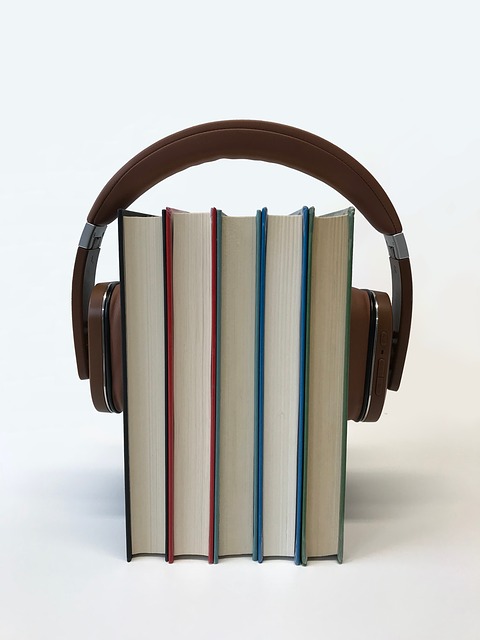The rise of podcasts and audiobooks has reshaped how stories, knowledge, and conversations travel to audiences. Unlike print, writing for audio is a performance-based craft: words are heard, not read. This seemingly simple difference changes everything—sentence rhythm, choice of words, even the way information unfolds. A written piece that works perfectly on the page may sound flat, confusing, or overly dense when spoken aloud. To capture attention in the soundscape, a writer must balance clarity, rhythm, and authenticity.
This essay explores the essential elements of writing for audio: the unique qualities of spoken language, the importance of pacing, the role of pauses and sound, and the ways writers can adapt their craft for the ear rather than the eye. While traditional prose thrives on visual detail, audio thrives on immediacy, rhythm, and connection. By mastering these principles, writers can create scripts that not only inform but also resonate deeply with listeners.
Language for the Ear
Spoken words carry a natural informality that printed words often lack. A good audio script acknowledges that listeners process language in real time—they cannot re-read a sentence if it is too dense. Therefore, simplicity, clarity, and conversational tone become essential.
Shorter sentences work best in audio. A sentence that looks elegant on the page may trip the tongue or overwhelm the ear. Writers should prefer direct verbs and active voice to avoid monotony. Furthermore, audio writing embraces contractions (“don’t” instead of “do not”) because they match natural speech patterns.
Another consideration is word choice. Some words that seem neutral in writing may feel awkward or overly formal when spoken. For example, “utilize” sounds stiff, while “use” feels natural. The goal is to create text that flows seamlessly when read aloud, almost indistinguishable from spontaneous conversation.
Table: Differences Between Writing for the Page and Writing for Audio
| Feature | Page Writing | Audio Writing |
|---|---|---|
| Sentence length | Can be long and complex | Short, simple, easy to follow |
| Vocabulary | Elevated or formal words acceptable | Conversational, familiar words |
| Tone | May be academic or literary | Relatable, natural, engaging |
| Reader control | Reader can pause/re-read | Listener only hears once in real time |
| Rhythm | Less critical | Crucial for flow and engagement |
Rhythm, Tempo, and Flow
Audio is music as much as it is language. The rhythm of words—where the emphasis falls, how syllables stack, and how ideas move forward—shapes how listeners perceive content. A script that ignores rhythm may sound flat or exhausting, while a script written with tempo in mind can feel almost melodic.
Varying sentence length keeps listeners engaged. A series of short sentences creates urgency. Longer sentences, with careful pauses, can slow down the tempo, allowing ideas to sink in. This natural variation mimics conversation and avoids monotony.
Tempo also connects to genre. A suspenseful podcast might lean on quick, sharp sentences that create tension, while a reflective audiobook might use slower pacing, with more descriptive passages that give the narrator space to breathe. Writers must imagine not only what they want to say but also how it will sound when spoken.
In practice, testing rhythm requires speaking drafts aloud. If the script feels clunky, confusing, or monotonous when voiced, it needs revision. The ear is the best editor in audio writing.
Sound, Silence, and Pauses
One of the most overlooked aspects of writing for audio is the role of silence. Unlike the page, where white space guides the eye, pauses guide the ear. A well-placed pause can create suspense, emphasize a point, or give listeners time to absorb information.
Punctuation plays a new role in audio. Commas often act as natural breaths, while dashes or ellipses can indicate dramatic pauses. Writers must imagine how punctuation translates into voice performance. For instance, overloading a script with commas can lead to a rushed delivery, while strategic line breaks encourage emphasis.
Sound itself—intonation, volume, emphasis—adds another dimension. Writers should anticipate how narrators might use emphasis to bring words to life. Scripts can include stage directions or subtle cues, such as “pause” or “emphasize,” but often the writing itself should suggest rhythm and tone.
Even repetition, frowned upon in some forms of writing, can be powerful in audio. Repeating a key phrase ensures listeners remember it, especially since they cannot revisit the sentence visually. Silence, sound, and repetition form the invisible architecture of effective audio writing.
Adapting Style for Podcasts and Audiobooks
Though both podcasts and audiobooks fall under audio storytelling, they require different stylistic choices. Podcasts, often conversational and episodic, work best with informal language, personal anecdotes, and interactive tone. Writers can imagine speaking to a single listener—this intimacy makes podcasts compelling.
Audiobooks, on the other hand, demand endurance and narrative consistency. Writers should aim for clarity across hours of narration, ensuring descriptions are vivid yet not overwhelming. Audiobook writing can tolerate more detail than podcasts, but it still benefits from clean syntax and rhythmic flow.
In both formats, knowing the audience is vital. A business podcast may call for sharp, direct language with minimal ornamentation, while a fantasy audiobook can luxuriate in imagery. Still, the underlying rule remains: if it does not sound good when spoken, it does not belong in the script.
Conclusion: Writing with the Listener in Mind
Writing for audio challenges writers to reimagine their craft through sound. Instead of focusing solely on what looks good on the page, the writer must consider how words breathe, how sentences carry emotion, and how pauses sculpt meaning. Simplicity, rhythm, sound, and audience awareness transform text into a living performance.
As podcasts and audiobooks continue to grow, the demand for effective audio writing will only increase. Writers who master this skill will find themselves at the forefront of storytelling in the twenty-first century. Ultimately, writing for audio is not just about words—it is about voices, silence, and the shared experience of listening.



